How and when to prune barberry: a guide for beginner gardeners
An important procedure when growing any shrubs is pruning. Barberry recovers well after cutting, growing 30 centimeters annually. Due to this property, the bush is popular among landscape designers.
Why is barberry pruned?
Barberry - a thorny multi-stemmed shrub up to four meters high. The plant can grow taller if measures are not taken. The branches of the bush are spreading, directed in different directions; without regular thinning, the plant turns into impassable jungle.
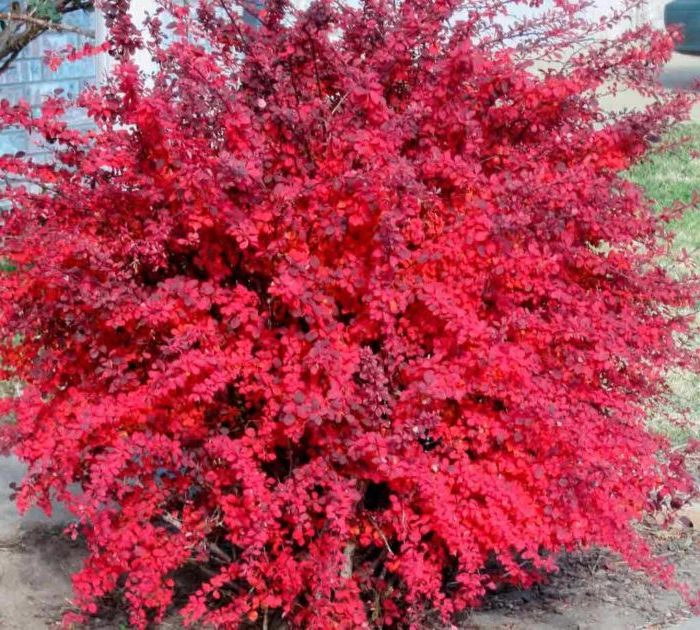
For those who are still wondering whether to take up the pruning shears, it is worth taking care of the future harvest. Tasty and healthy berries appear only on annual shoots and provided that they are not located in the shade. Thinning barberry also serves as a prevention of fungal diseases; insects are less likely to damage an unthickened plant.
When to prune: spring or autumn
For barberry, the season in which pruning will be done does not matter. The main thing is to follow the recommendations:
- after the first autumn frosts, the plant cannot be pruned;
- in spring, the procedure should be done before the leaves appear;
- The time is selected based on the species: evergreens crown after flowering, deciduous ones - before the buds burst.
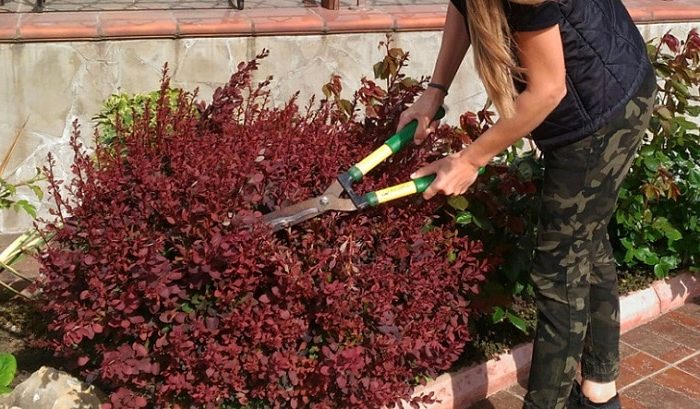 Pruning can be sanitary, formative and rejuvenating. Each type should be planned for certain months:
Pruning can be sanitary, formative and rejuvenating. Each type should be planned for certain months:
- Rejuvenating. The procedure is performed after the snow melts.
- Formative. Produced in the spring months in order to give the bush the desired appearance.
- Sanitary. Can be done twice per season: in March and September.
Barberries planted as a fence or border are pruned in two steps. At the beginning of summer, they cut their hair for the first time, and repeat the procedure towards the end of August.
Important! Barberry can be pruned no earlier than the second year after planting.
Barberry pruning technology
How to prune barberry depends on the purpose for which the branches of the bush are shortened.
We recommend reading How to grow barberry from seeds at home and in open ground.
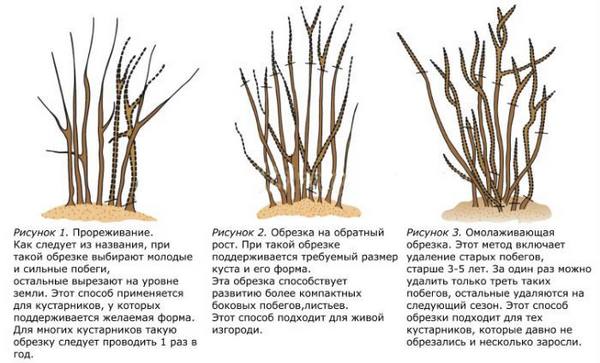
Sanitary pruning
During the procedure, diseased, dry and underdeveloped branches are cut from the bush. All this helps in the fight against pests and fungi. It is recommended to remove all excess from the bush twice per season.
In this case, it is necessary to eliminate thin sprouts and old shoots under the base, and thin out the crown.
You should not touch the young shoots; the future harvest will form on them.
You can understand that the bush needs this particular type of pruning visually.
Anti-aging pruning
This haircut has two goals at once: improving the aesthetic appearance of the plant and increasing the number of berries on the bush. Why should you remove branches that will not bear fruit? As a rule, these are strong branches located on the same base.
Only old shrubs that are at least ten years old are rejuvenated.
Manipulations are prohibited if leaves are visible on the branches in the spring, and the first frosts occurred in the fall. Unnecessary shoots are removed at the root. After rejuvenating pruning, shoots appear on the plant in large quantities.
Formative pruning
Even an inexperienced gardener can handle a small crown trimming. Until the barberry is five years old, the bush is forming. At this time, you can’t even dream about a harvest. Pruning begins when ovaries appear on the plant.
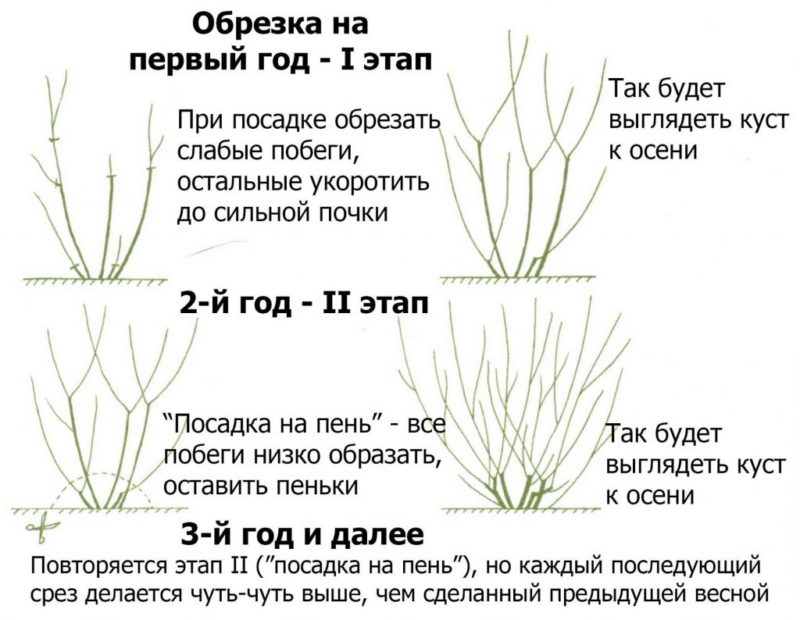 On an adult bush, rejuvenating pruning is performed before the formative one, and only then the bush is brought to the desired appearance. You can shorten the shoots twice during the summer. Young branches from 10 centimeters are reduced by half their length. Young barberry is formed in the form of simple figures, and as it grows it becomes more complex.
On an adult bush, rejuvenating pruning is performed before the formative one, and only then the bush is brought to the desired appearance. You can shorten the shoots twice during the summer. Young branches from 10 centimeters are reduced by half their length. Young barberry is formed in the form of simple figures, and as it grows it becomes more complex.
Spring and autumn pruning
Barberry branches are shortened in spring or autumn. The rejuvenating procedure is done before the first frost after the leaves fall. Preventive measures are planned based on the type of planting:
- Sanitary carried out on single plants, as well as border plantings and hedges. Broken, dried and unsightly shoots are removed, the dense crown is thinned out, and healthy branches are pruned.
- Formative do only on single bushes. First, remove branches growing close to the soil and reduce the number of shoots. Annual growths are made eight centimeters shorter.
- Rejuvenating Can be used on hedges, borders and single bushes. During the procedure, old, thin and underdeveloped branches are shortened. Young shoots are cut to 2/3 of their length.
Summer pruning of barberry
Pruning can be done not only at the beginning or end of the season. If in the summer there is a need to trim the crown or dry branches, you don’t have to wait until autumn comes:
- Formative pruning in early June they are produced on hedges or border plantings. Using templates, the height and width of the hedge are changed by cutting off stray shoots. The procedure can be repeated again after two months.
- Sanitary pruning can be performed on single bushes, borders and hedges. During manipulations, branches damaged by pests and infected shoots are cut off. Dry and diseased branches go under the knife, affecting the decorative appearance of the bush.
We form barberry according to the rules
The appearance of the bush can begin to change when it is two years. To begin with, the branches growing near the ground are put in order. They are shortened by 10 centimeters.
This technique will help to form a lush crown of the bush by autumn.
Next summer, the shoots are cut 5 centimeters higher than the previous ones. To give the shrub the intended shape, four skeletal branches are first laid, and a couple of new ones are added to them every year. Due to the different lengths of the shoots, a pyramidal shape is achieved over time.
How to prune Thunberg barberry
In Russia you can often find barberry thunberg. It is decorative, with unusual foliage color and is frost-resistant. The fruits of this variety cannot be eaten. Dwarf varieties can be trimmed a little, adjusting the crown to achieve a spectacular look.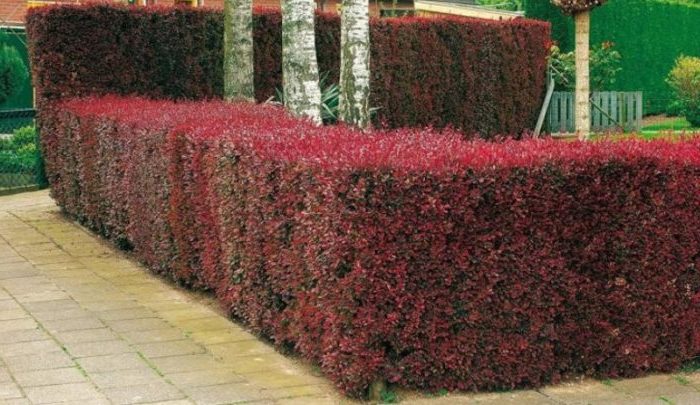
Planting barberry Thunberg and the quality of living borders. In this form, they need to be trimmed not only to maintain decorativeness, but also for sanitary purposes:
- The first haircut is done when the barberry is 10 years old.
- The plant has large spines; you can only work with it using protective gloves, sharp pruning shears and a hacksaw.
- Start cutting from the ground to the top of the head.
- The cut is made at an angle and close to the kidney. The stump should be smooth without burrs or damage to the bark.
- The shoots are pruned to a developed bud, treating the cuts with garden varnish.
- The side branches are cut off at the base along a circular influx.
- When crowning, some of the young branches are removed.
- Anti-aging pruning is divided into several parts.
- All debris remaining after pruning should be removed from the area to prevent infections and parasitic insects from getting inside the bush.
- When planting a seedling, healthy branches are made a little shorter and weak ones are removed.
- In autumn, potassium-phosphorus fertilizers are applied to barberries.
- Low-growing bushes do not need to be molded; it is enough to trim dry and diseased branches from them.
Conclusion
During pruning, barberry not only improves in appearance, but also becomes healthier. If the bush is thickened, infections will occur and parasites will develop due to insufficient ventilation. Pruning is not easy, but a novice gardener can handle it if desired.